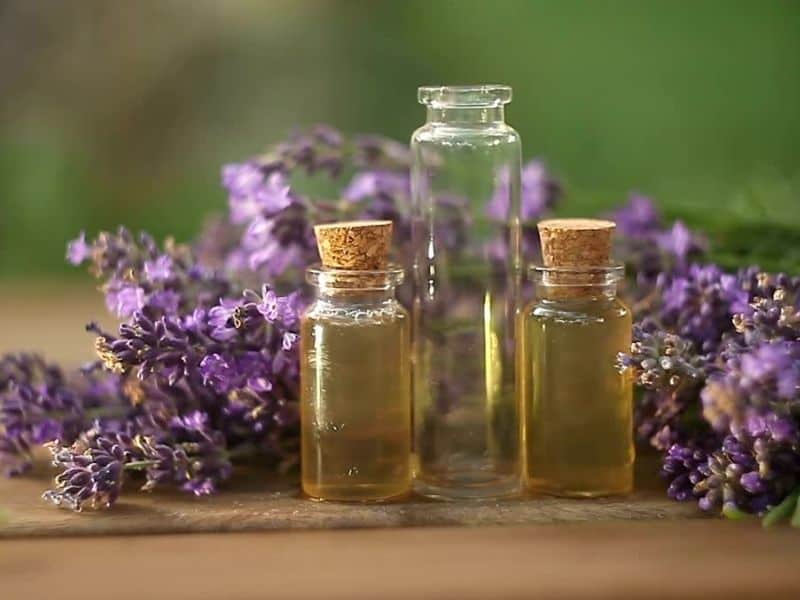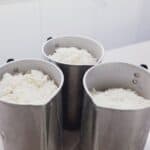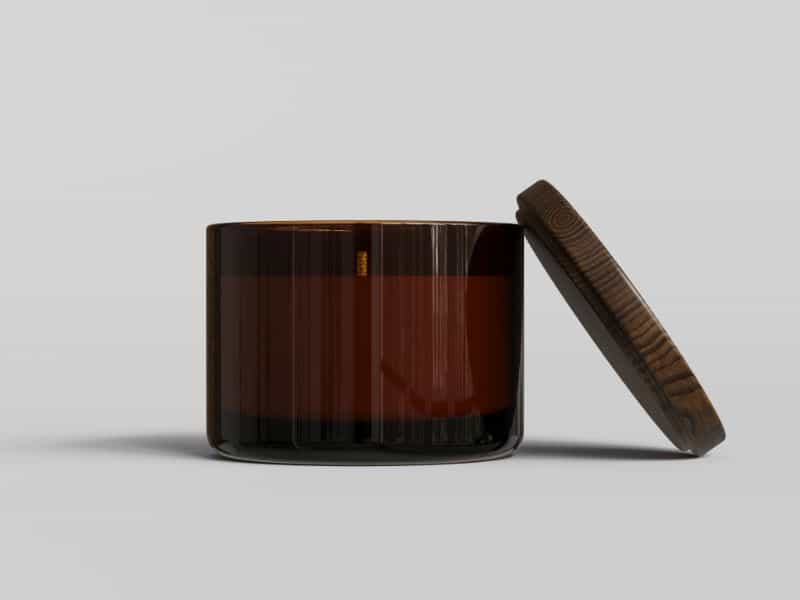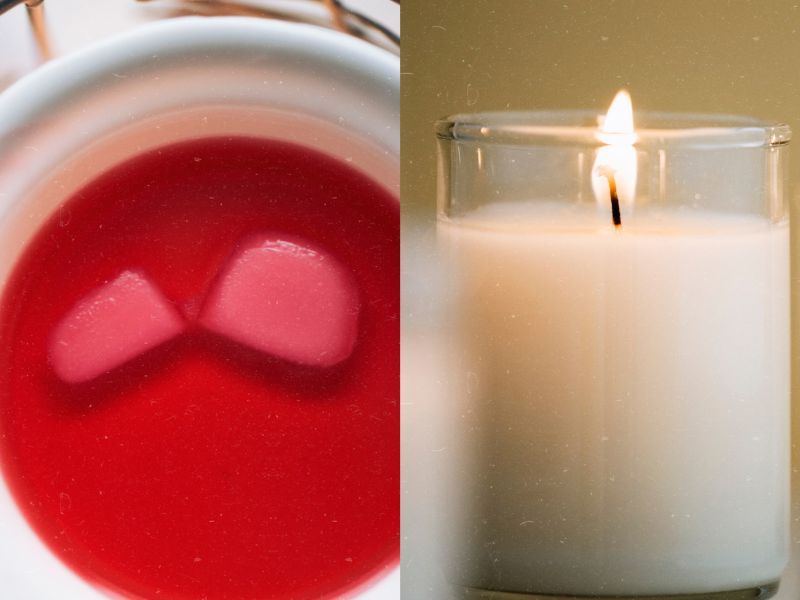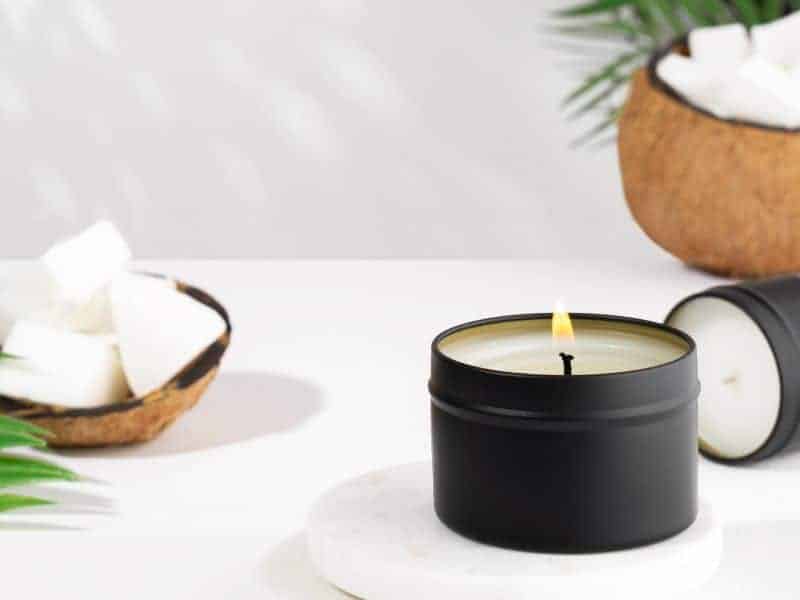Essential oils play a crucial role in transforming ordinary candles into delightful, aromatic experiences. With their natural origins and diverse scents, essential oils not only enhance the ambiance of a room but also offer therapeutic benefits. However, this all depends on you getting the correct percentage of essential oil in your candles.
Candles typically contain 3-10% essential oils, depending on the wax type and desired scent strength. This means that if you use 97 grams of wax you should have 3 grams of essential oil or if you have 90 grams of wax you should have 10 grams of essential oil.
The difference in scent between a 3% fragrance candle and a 10% fragrance candle can be quite drastic. A 10% essential oil concentration will give your candles more of a “perfume” type smell while still allowing the wax to burn all the way down. Let’s take a closer look at this issue.
Percentage of Essential Oils
Typical Essential Oil Loads
Candles typically contain between 3-10% essential oils, depending on factors such as the type of wax used, desired scent strength, and burning performance.
A lower percentage, like 3%, will result in a subtle scent, while a higher percentage, closer to 10%, will produce a more potent fragrance.
It’s essential to find the right balance to achieve the desired aroma without causing issues like uneven burning or poor scent throw.
Impact on Scent Strength and Quality
The percentage of essential oils used in candles significantly impacts scent strength and overall quality. A higher percentage often translates to a stronger, more noticeable fragrance. However, exceeding the recommended essential oil ratio can lead to problems such as an overpowering scent, uneven burning, or even potential safety hazards like excessive smoke or soot production.
Conversely, using too little essential oil may result in a weak or barely detectable scent, diminishing the intended aromatic experience. Striking the right balance is key to creating high-quality, enjoyable scented candles.
Choosing Quality Essential Oils
Selecting Pure, High-Quality Oils
Selecting pure, high-quality essential oils is crucial for creating exceptional scented candles. Look for reputable suppliers and ensure the oils are 100% pure, natural, and free of synthetic additives or diluents.
Check for proper labeling, which should include the oil’s botanical name, extraction method, and country of origin.
Additionally, consider the oil’s shelf life, as oils lose their potency and fragrance over time. Choosing high-quality essential oils ensures a better overall scent experience and improved candle performance.
Impact on Scent and Performance
The quality of essential oils directly impacts the scent and performance of candles. Pure, high-quality oils provide a more authentic, richer fragrance, elevating the overall candle experience.
Inferior or diluted oils may result in weak or inconsistent scents, while synthetic additives can negatively affect the burning characteristics of the candle.
Investing in quality essential oils ensures a superior scent experience and optimum candle performance.
Blending Essential Oils
Tips for Combining Oils
Blending essential oils can create unique, harmonious fragrances for your candles. Start by selecting oils that complement each other, using a combination of top, middle, and base notes.
Top notes are the first scents you’ll notice, middle notes provide balance and base notes add depth. Experiment with different ratios, keeping in mind that some oils may overpower others. Begin with a small amount, and adjust the blend as needed.
Test your blends on paper strips or cotton balls to evaluate the fragrance before adding it to your candles.
Creating Unique Fragrances
Creating unique fragrances involves trial and error. Keep a record of your blends, noting the oils used and their ratios. This will help you refine your combinations and create your own signature scents.
Don’t be afraid to think outside the box and mix unconventional pairings. Blending essential oils can be a fun, creative process that results in distinctive, personalized candles.
Essential Oil Safety Tips
Handling and Storage Guidelines
Proper handling and storage of essential oils are essential for safety and maintaining their potency. Always use clean, non-reactive containers, like glass, to store oils. Keep them in a cool, dark place away from direct sunlight and heat sources, as exposure can degrade the oils.
Ensure the containers are tightly sealed to prevent oxidation and evaporation. Use gloves when handling undiluted oils, as they can cause skin irritation. Wash your hands thoroughly after working with essential oils.
Safety Considerations in Candle Making
Safety is a top priority when working with essential oils in candle making. Follow recommended essential oil percentages to avoid issues like uneven burning, weak scent throw, or excessive smoke production.
Be cautious of potential skin irritation or allergies when handling undiluted oils. Work in a well-ventilated space to reduce the risk of inhaling concentrated oil vapors. Lastly, always monitor your burning candles and never leave them unattended.
By adhering to safety guidelines, you can create enjoyable, high-quality candles with confidence.
Wax Types and Essential Oil Load Percentages
Soy Wax
Soy wax, a popular choice for candle making, is derived from soybean oil. It’s natural, eco-friendly, and has a lower melting point compared to other waxes.
Soy wax can typically hold 6-10% essential oils, allowing for a stronger scent throw. It’s important to follow the recommended guidelines to ensure optimal performance and fragrance.
Paraffin Wax
Paraffin wax, a petroleum byproduct, is a common and affordable option for candles. It offers a smooth finish and consistent burning.
Paraffin wax can hold 3-6% essential oils, providing a more subtle scent. Adhering to these percentages helps prevent issues like uneven burning or weak scent throw.
Beeswax
Beeswax, a natural wax produced by bees, is prized for its long burn time and honey-like aroma. It’s an eco-friendly option but can be more expensive than other waxes.
Beeswax can hold up to 6% essential oils, offering a moderate scent experience. Follow the guidelines for this wax type to achieve the best results.
Essential Oil Guidelines for Each Type
To create high-quality scented candles, it’s crucial to follow the essential oil guidelines for each wax type. Soy wax works best with 6-10% oils, paraffin wax requires 3-6%, and beeswax can hold up to 6%.
Adhering to these percentages ensures optimal scent throw and burning performance.
Candle Making Process & Essential Oils
Combining Wax, Essential Oils, and Wicks
The candle making process involves melting wax, adding essential oils, and inserting wicks into containers. First, melt the wax in a double boiler, maintaining a consistent temperature.
Once the wax reaches the ideal temperature, add the essential oils and stir gently to ensure even distribution.
Pour the wax mixture into containers with wicks secured in the center. Allow the candles to cool and harden before trimming the wicks and lighting.
Factors Affecting Essential Oil Percentages
Several factors affect essential oil percentages in candles, including wax type, desired scent strength, and burning performance. Different waxes have varying essential oil load capacities, which determine the optimal percentage.
The desired scent strength also influences the amount of essential oil used. Lastly, correct essential oil percentages ensure proper burning performance, reducing potential issues like uneven burning or excessive smoke.
Essential Oil Safety Precautions
Importance of Correct Essential Oil Ratios
Using the correct essential oil ratios is crucial for creating safe, effective candles. Proper percentages ensure optimal scent throw and burning performance.
Following guidelines for each wax type helps prevent potential hazards and ensures a pleasant candle experience.
Potential Issues with Incorrect Percentages
Incorrect essential oil percentages can cause various issues. Excess oil may lead to uneven burning, excessive smoke, or soot production, posing safety hazards.
On the other hand, too little oil can result in a weak or barely detectable scent, diminishing the intended aromatic experience.
Adhering to the recommended essential oil percentages for each wax type is essential for creating enjoyable, high-quality scented candles.
Troubleshooting Common Issues
Weak Scents
Weak scents can occur when too little essential oil is used, or the oils have lost their potency. To resolve this issue, ensure you’re using the correct essential oil percentage for your chosen wax type.
Additionally, store your oils properly to maintain their fragrance strength. If the scent remains weak, consider increasing the essential oil percentage slightly, without exceeding the recommended limits.
Uneven Burning
Uneven burning, or tunneling, can result from incorrect essential oil percentages, inadequate wick size, or improper burning practices. To prevent this, adhere to the essential oil guidelines for each wax type.
Choose the right wick size for your container and ensure it’s properly centered. When burning your candle, allow the wax to melt completely across the surface before extinguishing the flame. This helps create an even burn pool and prevents tunneling.
Solutions for a Successful Candle Experience
Achieving a successful candle experience requires attention to detail and adherence to guidelines. Use the correct essential oil percentages, choose high-quality oils and wicks, and follow proper burning practices.
With these steps, you’ll create beautiful, fragrant candles that burn evenly and safely.
Conclusion
In conclusion, essential oil percentages in candles typically range from 3-10%, depending on factors like wax type and desired scent strength. Following the guidelines for each wax type ensures an enjoyable fragrance experience without compromising safety or burning performance.
Adhering to essential oil guidelines is crucial for creating delightful, high-quality scented candles. Proper percentages not only ensure a pleasant scent experience but also help prevent potential issues like weak scents or uneven burning.
By following these guidelines and paying attention to details, you can craft beautiful, fragrant candles that enhance your surroundings and promote relaxation and well-being.

